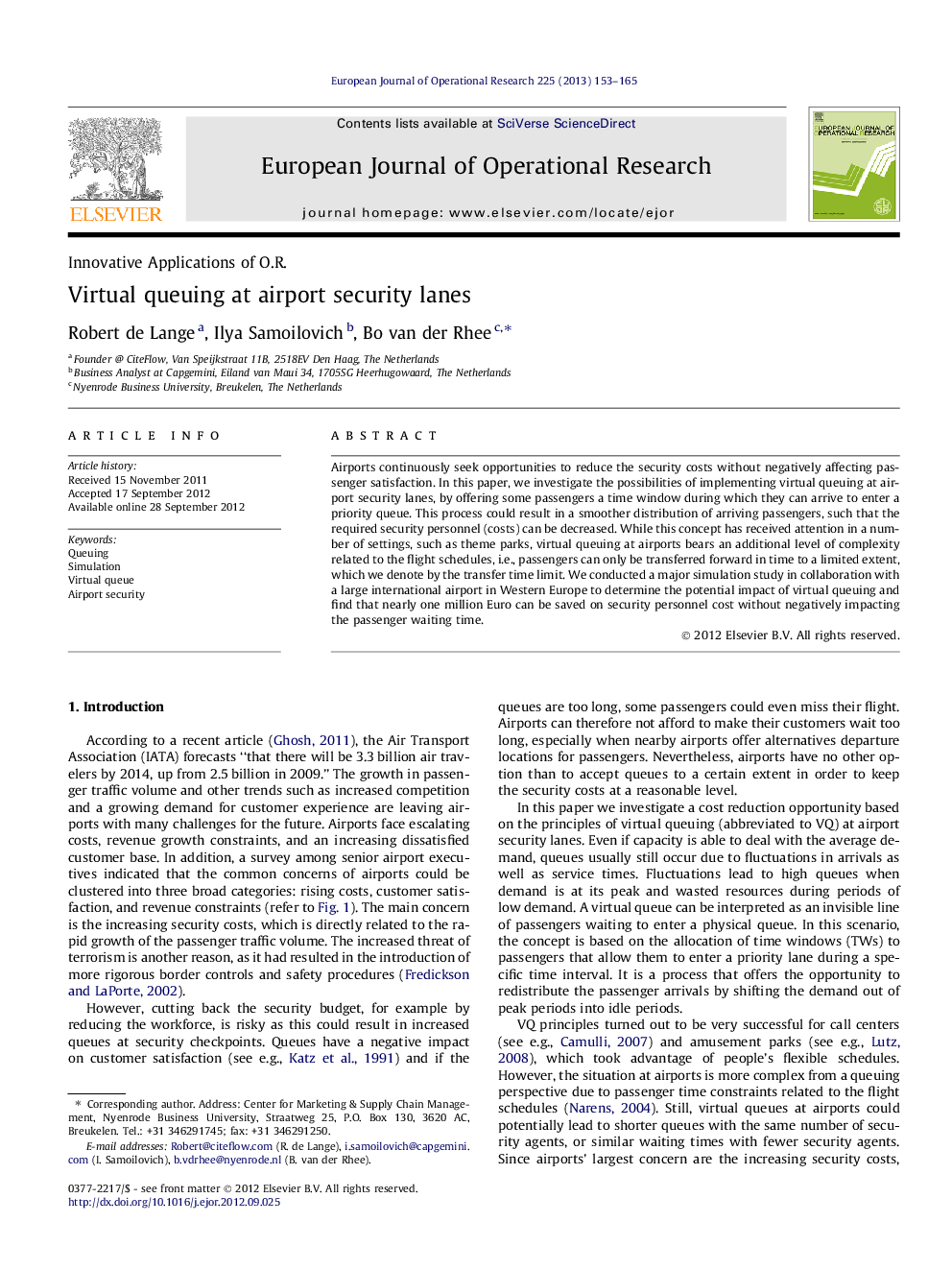| Article ID | Journal | Published Year | Pages | File Type |
|---|---|---|---|---|
| 480034 | European Journal of Operational Research | 2013 | 13 Pages |
Airports continuously seek opportunities to reduce the security costs without negatively affecting passenger satisfaction. In this paper, we investigate the possibilities of implementing virtual queuing at airport security lanes, by offering some passengers a time window during which they can arrive to enter a priority queue. This process could result in a smoother distribution of arriving passengers, such that the required security personnel (costs) can be decreased. While this concept has received attention in a number of settings, such as theme parks, virtual queuing at airports bears an additional level of complexity related to the flight schedules, i.e., passengers can only be transferred forward in time to a limited extent, which we denote by the transfer time limit. We conducted a major simulation study in collaboration with a large international airport in Western Europe to determine the potential impact of virtual queuing and find that nearly one million Euro can be saved on security personnel cost without negatively impacting the passenger waiting time.
► Airport security personnel can be more efficiently scheduled to reduce costs. ► Virtual Queuing can be used to reduce the passenger arrival peaks. ► Virtual Queuing has no negative effects on the average passenger waiting time. ► We find that the number of security agents could be reduced by 6.4–17.5%.
